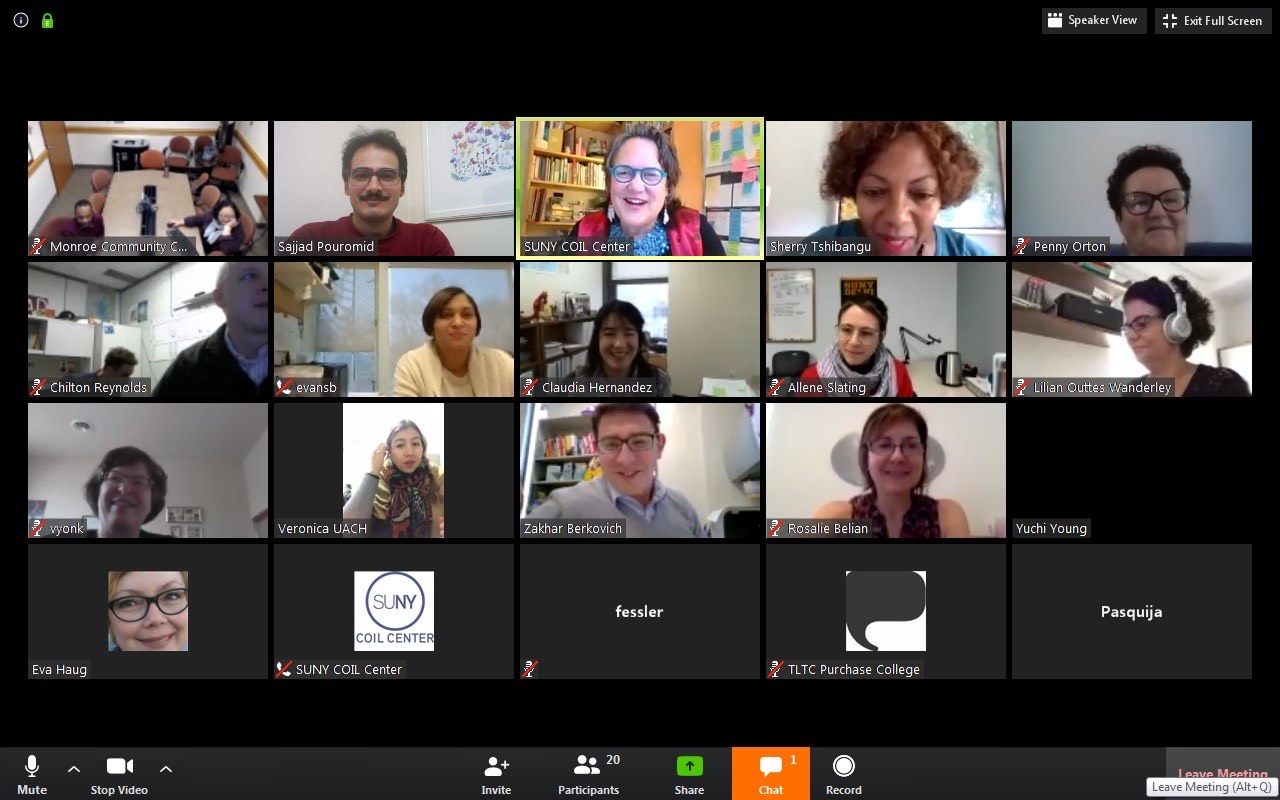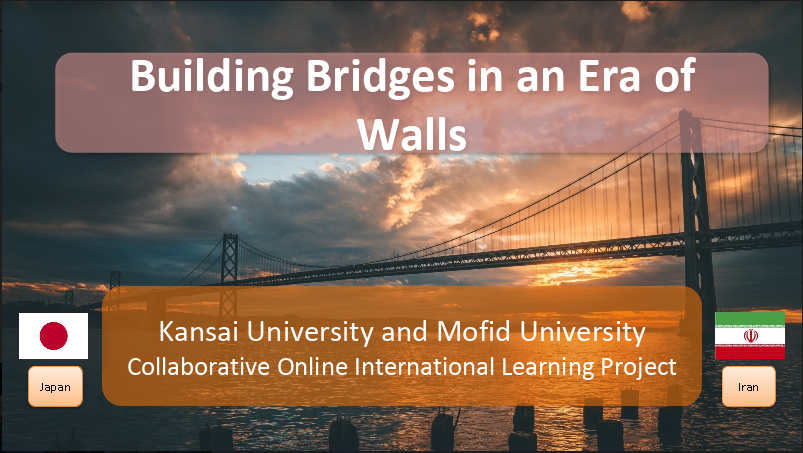2019.12.17News
KU-MU COIL : SUNY Faculty and Student COIL Presentations
Kansai University Professor Sajjad Pouromid, alongside COIL practitioners from various countries, attended a webinar hosted by the State University of New York on Tuesday, December 17th, to share their students’ projects with their fellow teachers.
During the webinar, Prof. Pouromid gave an introductory presentation to the group on his students’ ongoing KU-Mofid University (Iran) project. After an introduction on the project and its technological challenges due to issues related with sanctions imposed on Iran, Prof. Pouromid talked about the five stages in the project, namely the ice-breaker video production, cultural brainstorming, live Q&A session, cultural magazine production, and cultural fair presentation. Finally, he answered questions about the platform and apps used in the collaborative project.
A detailed program report is included below.
For more NEWS about the KU-MU COIL, visit
http://www.kansai-u.ac.jp/Kokusai/IIGE/news/detail.php?seq=62
http://www.kansai-u.ac.jp/Kokusai/IIGE/news/detail.php?seq=59

Building Bridges in an Era of Walls
Kansai University (JAPAN)-Mofid University (IRAN) COIL
Walls are built here. Walls are built there. Tune in for the latest news and chances are that you learn about new walls being built somewhere. They are built to keep others out. They are built to assure safety for those inside them. They are built by bricks carefully arranged next to each other and joined together using mortar. They are built solid and firm so that no outsider even dares to make an attempt to break in. Bricks are made of clay, which makes them visible from far off. Not all of them are as visible though. Thanks to recent advances in wall-building science and technology, walls can now be built by see-through bricks. Great! Outsiders can now remain outsiders forever without even realizing that. All of this has left education with an important decision to make: whether to be “just another brick in the wall” or to invest more in the seemingly less lucrative business of building bridges to reconnect people and shatter the insidious insider/outsider duality. Breakthroughs in computer-mediated communication and their application in contemporary education have made it easier to make such a decision now compared with any other moment in history. Pretty similar to any other aspect of life in the modern time (or maybe in all times), education has turned into a space for political struggle between those who uphold nationalism and those who favor human emancipation regardless of race, ethnicity, religion, and gender. But how can education support this latter cause? Well, as the old saying goes where there’s a will there’s a way.
Collaborative Online International Learning (COIL) is one such way. Through connecting students in higher education institutions across borders, it has featured enormous potential for building trust, friendship, and cross-cultural understanding. What is more, it has made it possible for the voices of individuals surrounded by multiple rows of walls to be heard. Kansai University’s recent COIL project with Mofid University from Iran provides compelling evidence for this claim. Trapped and squeezed between severe sanctions from the west and the east that limit their access to medicine, technology and quality education among other things, and their own government, which audaciously shuts down the internet entirely for more than a week to silence political protests, the people of Iran have been constantly vying for a chance to engage in constructive dialogue with the world. Beyond a discussion of who is right and who is wrong in the Iran-World dispute, it is the people of Iran who have had to endure a lot. They have the right to be heard. Haruki Murakami, the Japanese writer, once said: “if there is a hard, high wall and an egg that breaks against it, no matter how right the wall or how wrong the egg, I will stand on the side of the egg.” COIL gave us the chance to stand on the side of the fragile egg. Here is a short report of how we did that.
Stage 1: Ice-breaking
Students in both classes were asked to generate questions about the other country. The questions were then randomly assigned to students from the other class, who then introduced themselves in a short video and answered the question given to them. The videos were posted on FlipGrid available to all students to watch and reply to.
Stage 2: Cultural Brainstorming
Students in each class were put into groups and were asked to brainstorm about the culture of the other country and create a mind map of their ideas. Once all mind maps were posted on Padlet, students in the other class were asked to read them and comment on them pinpointing any incident of stereotyping and/or bias. All groups were then asked to revise their mind maps based on the comments they had received.
Stage 3: Live Q & A session
Some of the students from the Iranian class stayed up until 4:00 a.m. to meet their peers from the Japanese class in a Skype meeting and answered their questions regarding different aspects of Iranian culture. Students in the Japanese class took notes to use the information in the subsequent activities.
Stage 4: Cultural Magazine
Students from the two classes were put into mixed-nationality groups and were given two weeks to create a two page cultural magazine about a cultural aspect of their choice comparing Iran and Japan. They were encouraged to exclusively use self-generated visuals in their magazines including photos they could take or illustrations they could draw. The magazine pages were first posted on Padlet and after revisions were made the teachers printed them, put them together and created a magazine.
Stage 5: Cultural Fair Presentation and Reflection
Printouts of the cultural magazine pages were brought to the classes to organize a small Cultural Fair, during which students in each group would pin the pages to the walls around the classroom while other students would go around and listen to their peers’ presentations about them. Finally, students were asked to write a reflection essay on their COIL experience in the semester.
